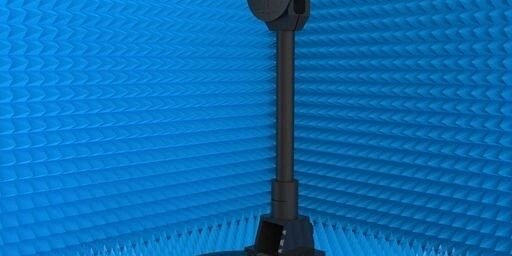5G technology is quick, strong, and transforming the way we connect. Engineers conduct a special test known as Over-the-Air (OTA) testing to ensure 5G phones function flawlessly. This test verifies how the phone transmits and receives signals through the air. An RF shielded enclosure from DMC suppresses external signals from interfering with the test, providing accurate results.
In this post, we will discuss the procedure of doing 5G OTA testing using an RF shielded enclosure.
What Is 5G OTA Testing?
5G OTA testing confirms a device’s wireless performance without cables. It also tests how well the device:
- Transmits
- Receives
- Functions in real wireless conditions
Engineers conduct this test in a controlled, shielded environment, like those built by DMC, to prevent signal interference from the environment.
Why Use an RF Shielded Enclosure?
An RF shielded enclosure excludes all unwanted RF signal. This avoids making the test environment unstable and dirty. It avoids external interference in test results.
Key Benefits:
- Keeps signals clean during testing
- Prevents external interference
- Creates a controlled environment for repeatable testing
Equipment Needed
You will need the following equipment in order to conduct 5G OTA testing:
- RF Shielded Enclosure: Enclosure made of metal to keep out wireless signals
- Antenna Positioner: Useful for testing the device at various angles
- 5G Device Under Test (DUT): Module or phone to be tested
- Test Antenna: Receiver and sender of signals within the enclosure
- Signal Generator and Analyzer: Transmits 5G signals and detects the output
- Control Software: Orchestrates the test process and collects information

5G OTA Testing
Steps to Perform 5G OTA Testing in RF Shielded Enclosure
These are the easy steps to perform the test:
- Prepare the RF Shielded Enclosure
- Put the enclosure in a quiet and clean space.
- Inspect for damage or leakage in the shield.
- Close all doors and ports securely before testing.
- Set Up the Device
- Install the 5G device in the enclosure on a test stand.
- Power the device if necessary.
- Put the device in test mode.
- Set up the Test Antenna
- Secure the test antenna within the enclosure.
- Position it at a measured distance from the device.
- Utilize the positioner for the antenna to shift it in various directions if necessary.
- Connect Test Equipment
- Supply power to the signal generator and analyzer and connect them to the antenna.
- Integrate the control software with the system.
- Calibrate the gear as necessary.
- Begin the Test
- Send 5G signals to the device from the software.
- Monitor the response of the device.
- Test with varying frequencies, angles, and power levels.
- Save and Review Results
- Save all data gathered during the test.
- Verify signal strength, speed, and stability.
- Compared to the standard or reference.
Tips for Improving Testing
- Seal the shielded enclosure always before beginning the test
- Ground properly eliminate electrical noise
- Calibrate equipment for testing regularly
- Test at varying temperatures and humidity levels if required
- Adhere to safety protocol while operating RF equipment
Conclusion
5G OTA testing within an RF shielded room from DMC provides precise and reproducible results. It validates the performance of a product in actual wireless conditions. Simple steps and proper tools, followed by engineers, can guarantee world-class 5G devices. A spotless, shielded room is the secret to good testing.
If you are engaged in 5G devices, master the use of OTA testing right from the beginning with trusted infrastructure from DMC. It prevents post-launch problems and enhances overall performance.
Contact DMC today. Let’s see how we can help you achieve the dependable data you require.

